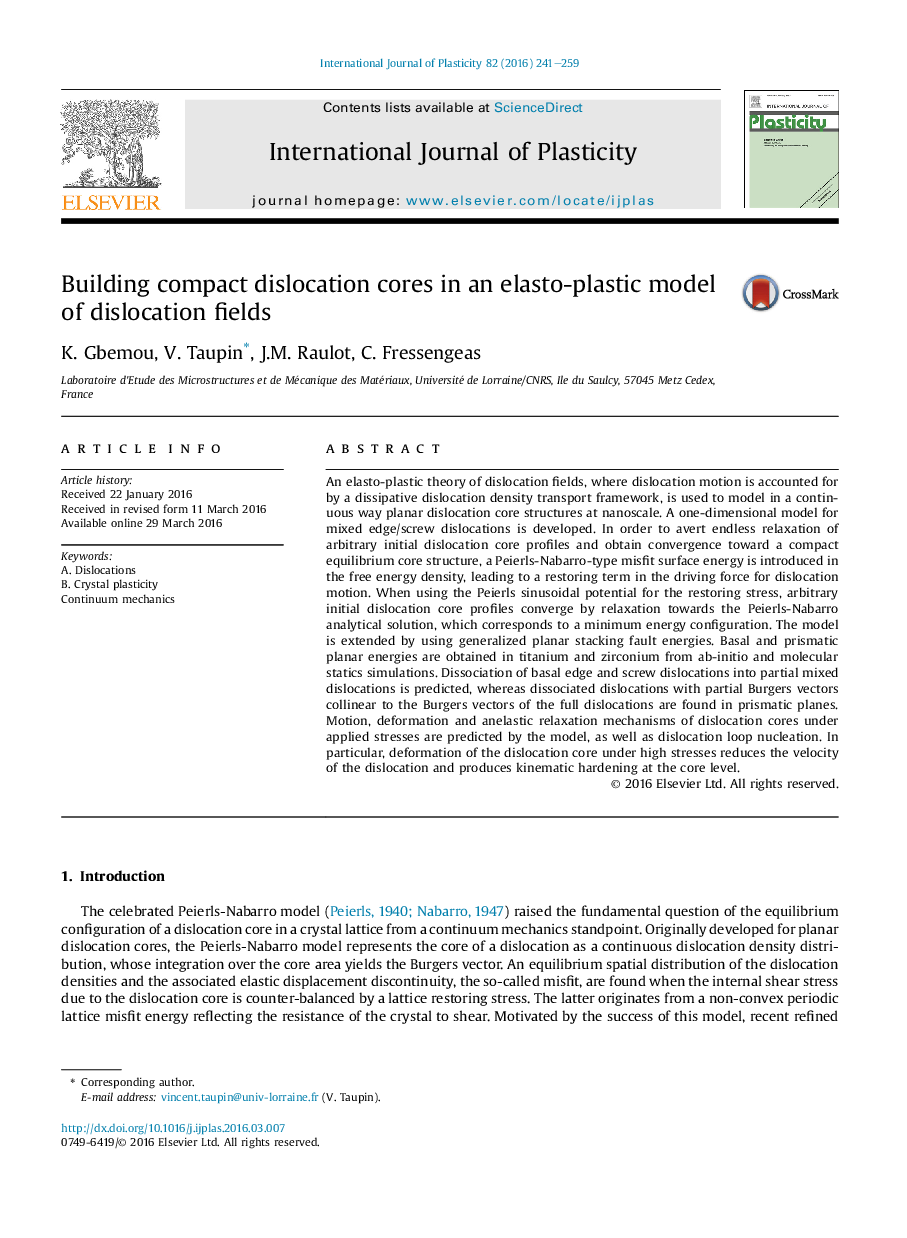| Article ID | Journal | Published Year | Pages | File Type |
|---|---|---|---|---|
| 784333 | International Journal of Plasticity | 2016 | 19 Pages |
•Planar dislocation cores are modelled with an elastoplastic model of dislocation fields.•Dissipative dislocation transport governs the evolution of the core structures.•Compact dislocation cores are obtained by the introduction of crystal misfit energies.•Application to dissociated dislocations in basal/prismatic planes in Zr and Ti.•Analysis of core motion/deformation under applied stress, and of nucleation.
An elasto-plastic theory of dislocation fields, where dislocation motion is accounted for by a dissipative dislocation density transport framework, is used to model in a continuous way planar dislocation core structures at nanoscale. A one-dimensional model for mixed edge/screw dislocations is developed. In order to avert endless relaxation of arbitrary initial dislocation core profiles and obtain convergence toward a compact equilibrium core structure, a Peierls-Nabarro-type misfit surface energy is introduced in the free energy density, leading to a restoring term in the driving force for dislocation motion. When using the Peierls sinusoidal potential for the restoring stress, arbitrary initial dislocation core profiles converge by relaxation towards the Peierls-Nabarro analytical solution, which corresponds to a minimum energy configuration. The model is extended by using generalized planar stacking fault energies. Basal and prismatic planar energies are obtained in titanium and zirconium from ab-initio and molecular statics simulations. Dissociation of basal edge and screw dislocations into partial mixed dislocations is predicted, whereas dissociated dislocations with partial Burgers vectors collinear to the Burgers vectors of the full dislocations are found in prismatic planes. Motion, deformation and anelastic relaxation mechanisms of dislocation cores under applied stresses are predicted by the model, as well as dislocation loop nucleation. In particular, deformation of the dislocation core under high stresses reduces the velocity of the dislocation and produces kinematic hardening at the core level.
